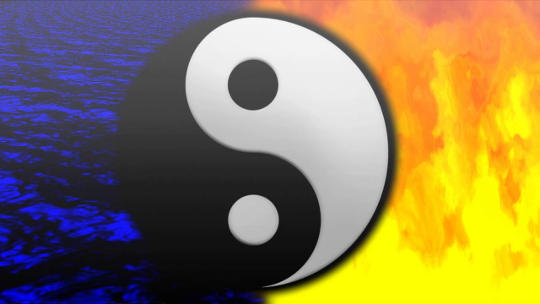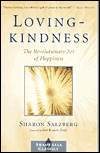
We can travel a long way and do many different things, but our deepest happiness is not born from accumulating new experiences. It is born from letting go of what is unnecessary, and knowing ourselves to be always at home. True happiness may not be at all far away, but it requires a radical change of view as to where to find it.
A meditator at one of our first retreats found this out in a very pointed way. Before we established the center of the Insight Meditation Society, we had to rent sites for long meditation retreats. For our first one, we rented a monastery with a beautiful chapel. In order to turn the chapel into a meditation hall where we could sit on the floor, we had to remove all the pews and store them in a large back room. Owing to a shortage of sleeping accommodations, one of the meditators slept in a corner of that back room for the duration of the retreat.
During the course of the retreat this meditator began to experience a lot of aches and pains. Feeling quite annoyed and disturbed by them, he spent a long time searching the monastery for the perfect chair, one that would allow him to sit without pain. Unable to find it, he decided that his only recourse was to sneak into the monastery workshop at night to build himself a chair. He meticulously planned how he would do this without being discovered. Then, confident that he would soon have the solution to his problems, he went to the workshop to look over the tools and materials available. Back in the room where he was staying, he sat down on one of the pews stored there and set about designing the absolutely perfect meditation chair, guaranteed to end suffering.
As he was sitting there working, he realized that he was feeling happier and happier. At first he thought the happiness came because he was creating the unheralded, revolutionary, perfect design. Then suddenly he realized that, in fact, he was so happy because he was remarkably comfortable sitting on one of the pews. He looked around and saw that there were about three hundred of those pews right in his own room. What he was looking for had been right in front of him all along. Instead of taking that tortuous mental journey, he could have just sat down.
Searching In All The Wrong Places
Sometimes we take quite a journey -- physically or mentally or emotionally -- when the very love and happiness we want so much can be found by just sitting down. We spend our lives searching for something we think we don't have, something that will make us happy. But the key to our deepest happiness lies in changing our vision of where to seek it. As the great Japanese poet and Zen master Hakuin said, "Not knowing how near the Truth is, people seek it far away. What a pity! They are like one who, in the midst of water, cries out in thirst so imploringly."
Ordinary happiness comes from the experience of pleasure -- the satisfaction, for a little while, of getting what we want. Such happiness is like the temporary appeasement of an unhappy, insatiable child. We reach out for the consolation of a momentary distraction, and then we are upset when it changes. I have a friend who is four years old. When he gets frustrated, or does not get what he wants, the hallways of his house echo with his cries: "Nobody loves me anymore!"
We as adults often feel the same: when we do not get what we want -- or when we get what we want, only to have it change -- it seems as though all the love in the universe has been withdrawn from us. Happiness becomes an either/or situation. Just like the four-year-old, our interpretations and judgments obstruct clear seeing.
What Goes Up Must Come Down
Life is just as it is, despite our protests. For all of us there is a constant succession of pleasurable and painful experiences. Once I was hiking with friends in Northern California. We had decided beforehand to follow a certain trail for the first three days, and then to retrace our steps for the next three. On the third day of this arduous hike, we found ourselves on a long, steady downhill slope. After several hours of this, one of my friends, suddenly realizing what all this walking downhill implied for the next day when we would be retracing our steps, turned to me and said glumly, "In a dualistic universe, downhill can mean only one thing."
The unrelenting flux of life's changing conditions is inevitable, yet we labor to hold on to pleasure, and we labor equally hard to avoid pain. So many images from our world tell us that it is wrong to suffer; advertising, social mores, and cultural assumptions suggest that feeling pain or sadness is blameworthy, shameful, humiliating. Underlying these messages is an expectation that somehow we should be able to control pain or loss. When we experience mental or physical pain, we often feel a sense of isolation, a disconnection from humanity and life. Our shame sets us apart in our suffering at the very times when we need most to connect.
Conventional transitory happiness carries a subtle undercurrent not only of loneliness but also of fear. When things are going well, when we are experiencing pleasure and are getting what we want, we feel obliged to defend our happiness because it seems so fragile, unstable. As though our happiness needed constant protection, we deny the very possibility of suffering; we cut ourselves off from facing it in ourselves and in others because we fear that it will undermine or destroy our good fortune.
Thus, in order to hold on to our pleasure, we refuse to recognize the humanity of a homeless person on the street. We decide that the suffering of others is not relevant to our own lives. We cut ourselves off from facing the world's suffering because we fear it will undermine or destroy our own happiness. In that highly defended state, we withdraw into so terrible an aloneness that we cannot experience true joy. How strange our conditioning is: to feel so alone in our pain, and to feel so vulnerable and isolated in our happiness.
What A Difference One Person Can Make!
For some people, a single powerful experience may propel them out of this isolation. Ashoka was an emperor in northern India about two hundred and fifty years after the time of the Buddha. In the early years of his reign, this powerful emperor was bloodthirsty and greedy for the expansion of his empire. He was also a very unhappy man.
One day, after a particularly terrible battle that he had launched in order to acquire more territory, he walked on the battlefield amid the appalling spectacle of corpses of men and animals strewn everywhere, already rotting in the sun and being devoured by carrion-eating birds. Ashoka was aghast at the carnage he had caused.
Just then a Buddhist monk came walking across the battlefield. The monk did not say a word, but his being was radiant with peace and happiness. Seeing that monk, Ashoka thought, "Why is it that I, having everything in the world, feel so miserable? Whereas this monk has nothing in the world apart from the robes he wears and the bowl he carries, yet he looks so serene and happy in this terrible place."
Ashoka made a momentous decision on that battlefield. He pursued the monk and asked him, "Are you happy? If so, how did this come to be?" In response, the monk who had nothing introduced the emperor who had everything to the Buddha's teachings.
As a consequence of this chance encounter, Ashoka devoted himself to the practice and study of Buddhism and changed the entire nature of his reign. He stopped waging imperialistic wars. He no longer allowed people to go hungry. He transformed himself from a tyrant into one of history's most respected rulers, acclaimed for thousands of years after as just and benevolent.
Ashoka's own son and daughter carried Buddhism from India to Sri Lanka. The teachings took root there and from India and Sri Lanka spread to Burma and Thailand and throughout the world. Our access to these teachings today, so many centuries and cultural transitions later, is a direct result of Ashoka's transformation. The radiance of that one Buddhist monk is still affecting the world today. One person's serenity changed the course of history, and delivered to us the Buddhist path to happiness.
Everything in Life Changes
The basis of the Buddha's psychological teaching is that our efforts to control what is inherently uncontrollable cannot yield the security, safety, and happiness we seek. By engaging in a delusive quest for happiness, we only bring suffering upon ourselves. In our frantic search for something to quench our thirst, we overlook the water all around us and drive ourselves into exile from our own lives.
We may look for that which is stable, unchanging, and safe, but awareness teaches us that such a search cannot succeed. Everything in life changes. The path to true happiness is one of integrating and fully accepting all aspects of our experience. This integration is represented in the Taoist symbol of yin/yang, a circle which is half dark and half light. In the midst of the dark area is a spot of light, and in the midst of the light area is a spot of darkness. Even in the depths of darkness, the light is implicit. Even in the heart of light, the dark is understood, acknowledged, and absorbed. If things are not going well for us in life and we are suffering, we are not defeated by the pain or closed off to the light. If things are going well and we are happy, we are not defensively trying to deny the possibility of suffering. This unity, this integration, comes from deeply accepting darkness and light, and therefore being able to be in both simultaneously.
The English writer E. M. Forster began one of his novels with a two-word epigraph: "Only connect." These two words perfectly express the shift we must make, from one worldview to another, if we are to find reliable happiness. We must move from trying to control the uncontrollable cycles of pleasure and pain, and instead learn how to connect, to open, to love no matter what is happening.
What You Do With Your Attention
The difference between misery and happiness depends on what we do with our attention. Do we, in the midst of water, look for something elsewhere to drink? Transformation comes from looking deeply within, to a state that exists before fear and isolation arise, the state in which we are inviolably whole just as we are. We connect to ourselves, to our own true experience, and discover there that to be alive means to be whole.
Consider how the sky is unharmed by the clouds that pass through it, whether they are light and fluffy-looking or dark and formidable. A mountain is not moved by the winds blowing over it, whether gentle or fierce. The ocean is not destroyed by the waves moving on its surface, whether high or low. In just that way, no matter what we experience, some aspect of ourselves remains unharmed. This is the innate happiness of awareness.
Sometimes I meet some extraordinary, loving teachers. In the first moment of seeing him or her I realize, "Oh, that's who I really am!" I feel a deep recognition of the innate and inviolate power of love within me as well. And I also see that many concepts about myself, my fears and desires, are superimposed over that power, concealing it. These concepts dissolve in the presence of such a person; I awaken for a moment and can say, "Oh, right, that's who I really am. That's what's right and possible for all beings." These encounters disprove my seeming limitations, and I walk free for a while from a prison that I once fabricated for myself.
Reprinted with permission of the publisher,
Shambhala Publications, Inc.
©1995, 2002. www.shambhala.com
Article Source
Loving-Kindness: The Revolutionary Art of Happiness
by Sharon Salzberg.
 In this inspiring book, Sharon Salzberg, one of America's leading spiritual teachers, shows us how the Buddhist path of lovingkindness can help us discover the radiant, joyful heart within each of us. This practice of lovingkindness is revolutionary because it has the power to radically change our lives, helping us cultivate true happiness in ourselves and genuine compassion for others. The Buddha described the nature of such a spiritual path as "the liberation of the heart, which is love." The author draws on simple Buddhist teachings, wisdom stories from various traditions, guided meditation practices, and her own experience from more than twenty-five years of practice and teaching to illustrate how each one of us can cultivate love, compassion, joy, and equanimity—the four "heavenly abodes" of traditional Buddhism.
In this inspiring book, Sharon Salzberg, one of America's leading spiritual teachers, shows us how the Buddhist path of lovingkindness can help us discover the radiant, joyful heart within each of us. This practice of lovingkindness is revolutionary because it has the power to radically change our lives, helping us cultivate true happiness in ourselves and genuine compassion for others. The Buddha described the nature of such a spiritual path as "the liberation of the heart, which is love." The author draws on simple Buddhist teachings, wisdom stories from various traditions, guided meditation practices, and her own experience from more than twenty-five years of practice and teaching to illustrate how each one of us can cultivate love, compassion, joy, and equanimity—the four "heavenly abodes" of traditional Buddhism.
Info/Order this paperback book. Also available as a hardcover and as a Kindle edition.
About the Author
SHARON SALZBERG has been practicing Buddhist meditation for twenty-five years. She is a cofounder of the Insight Meditation Society in Barre, Massachusetts, and teaches meditation around the country. Visit her website at www.loving-kindness.org.






























